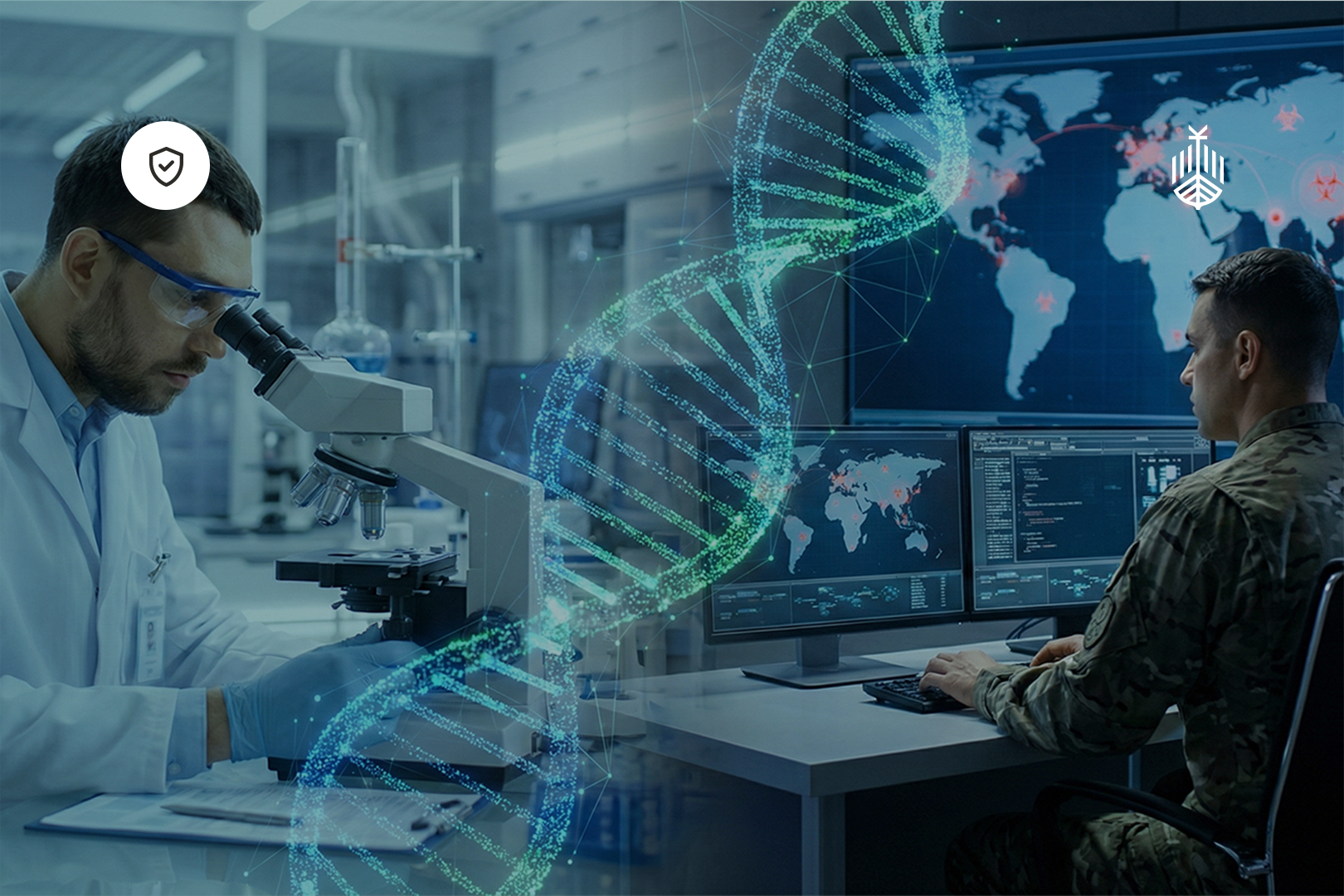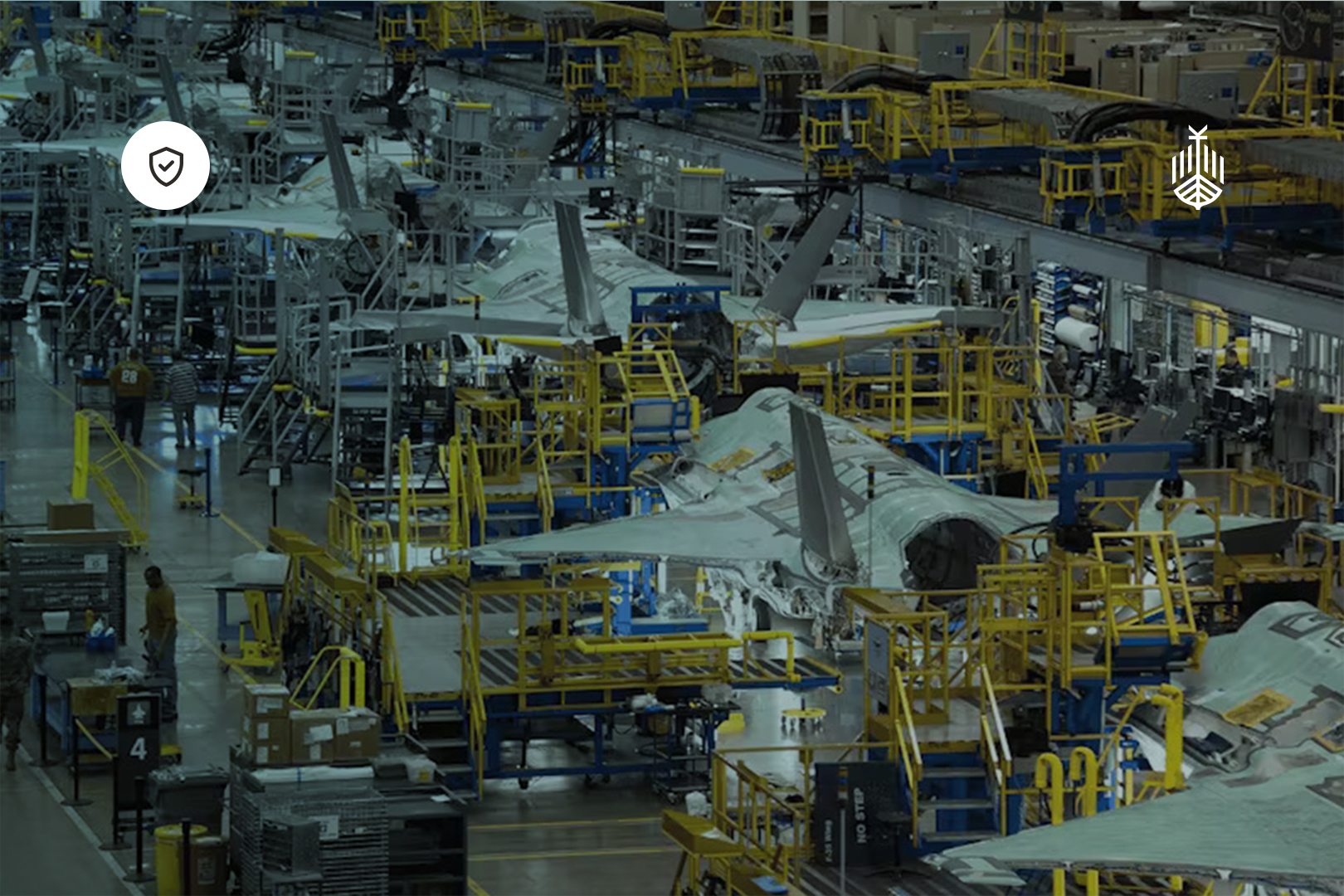Revolutionising Military Command & Control Now and in The Near Future
At its core, and agnostic of specific nation doctrine, the military decision-making process involves several key steps;
Mission Analysis
Course of Action (COA) Development
COA Analysis
COA Selection
Orders Development
Execution & Monitoring
After Action Review (AAR).
These steps form a cyclical and iterative process (that can be non-linear) allowing for continuous assessment, adaptation and improvement. Commanders and staff plan, execute and evaluate operations in a systematic manner, at ‘human speed’. With a reductionist’s eye, this can be further simplified.
John Boyd, a United States Air Force Colonel and military strategist, made a significant impact on western military thinking with his development of the OODA loop. Observe, Orient, Decide and Act, a decision-making cycle that Boyd introduced as a framework for understanding and improving individual and organisational decision-making in military operations. Boyd’s contributions revolutionized military thinking in several ways and the OODA loop emphasises the importance of speed, agility, orientation and most importantly decision-making as a competitive advantage.
In a dynamic environment, where uncertainty and ambiguity are inherent, the protagonist that can rapidly cycle through the OODA loop can gain a competitive advantage by outpacing adversaries and effectively responding to changing situations. What if one side is grinding through their decision-making cycle at human intelligence speed and the other is spinning through at artificial intelligence speed? What if both sides are operating at these machine speeds?
Specific artificial intelligence (AI) is permeating military decision making through the enhancement of traditional geospatial and temporal ‘map-based’ command and control software, linking up sensors to decision makers and ‘shooters’ (or knitted together in kill webs); this is well understood and documented in theory and increasingly practised in modern conflicts in the first half of the 21st century. Specific AI is designed for specific tasks and lacks the ability to generalise, while general AI aims to replicate human-like intelligence, possessing the ability to understand, learn and apply knowledge across multiple domains. So let us unencumber our minds and go on a thought experiment as to how general artificial intelligence might affect military decision-making in the battlespaces of the second half of the 21st century.
Jeff Hawkins, an entrepreneur who cofounded Palm Computing and co-created the palm pilot, is a prominent neuroscientist who proposed a theory of reference frames that aims to explain how the brain organises and represents spatial information. To the knowledge of the author of this article you are now reading, Jeff Hawkins is not involved in the defence industry. Though on reading his book, A thousand brains: a new theory of intelligence, and with this article’s author’s original undergraduate academic background in genetics and subsequent academic study in defence technology, Hawkins’ work creates a lightning rod in the mind as to the next revolution in military decision-making.
Hawkins’ theory of reference frames - which he presents in his book - proposes that the brain utilises a hierarchical system of reference frames. At the lowest level is the input from the body’s sensors, for example with the eye, where retinotopic mapping represents visual information based on the arrangement of cells in the retina, creating a spatial map of the visual field. Body-centred ‘proprioceptive’ reference frames build upon this by incorporating spatial information relative to the body’s position and orientation, facilitating spatial awareness and navigation. Moving up the hierarchy, the object-centred reference frame represents spatial information relative to objects in the environment, enabling recognition and interaction-based on their positions. Finally, the contextual frame incorporates higher-level cognitive processes and semantic information, integrating memory, attention, and learned associations to guide spatial understanding and decision-making.
The ‘Thousand Brains Theory’ posits that the brain operates as a network of thousands of interconnected mini-brains, or cortical columns, which collectively generate predictions about the world from external inputs, refined and updated by internal feedback loops. Hawkins argues that this predictive processing occurs in each mini-brain across multiple levels, and each cortical column autonomously processes sensory information, with continuous predicting of sensory inputs and comparison with incoming sensory data. The mini-brains collaborate and communicate with each other through complex neural connections. This predictive processing allows the neocortex of the brain to efficiently process sensory information and make sense of the environment.
Now for the Thought Experiment.
Imagine the commander in 2073, supported by the general AI of the future, let’s call her Evie as us humans love to anthropomorphise. This general AI can be thought of as a globally distributed and decentralised ‘body’.
Observe
Her sensors are not just limited to the biological senses of a human; vision, hearing, smell, taste and touch. Imagine the sensory information extending to inputs from every global multidomain sensor, from Open Source Intelligence (OSINT) on whatever the successor to today’s internet will be, to Land, Sea, Air, Space and Cyber based sensors exploiting every part of the electromagnetic spectrum from radio and microwaves, to multi and hyperspectral. All networked by near infinite electronic, light and possibly neutrino-based communication constituting neuron-like connections.
Today, cheap commercially available Uncrewed Ground, Aerial and (Sea) Surface and Subsurface Systems (UxS), the global proliferation of personal digital assistants (PDAs) such as smart phones creating OSINT and increasingly commercially accessible low-earth orbit cube satellites (cube sats) continue to democratise real time information gathering. This trend is only going to continue over the next 30 years.
Orientate
Distributed neurons will coalesce together into the mini-brains receiving, processing and predicting from global sensory inputs organised into cortical columns that do not have to be geographically co-located. This allows for a self-forming, self-routing and self-healing entity that can be inherently resilient through redundancy and re-learning and survive the destruction of subsets of cortical columns. This nervous system can operate at the reflexive level, feeding inputs into the neocortex of the general artificial intelligence with near limitless reference frames to make sense of the situation and environment.
Today’s navigation systems predominantly rely on Global Navigation Satellite Systems (GNSS), such as GPS. Computer vision-based systems and other means are able to compensate to a lesser extent in GNSS denied environments; imagine in the future the relative positions of a large number of sensors, platforms and effectors able to geolocate through proprioceptive position, as you intrinsically know where your limbs are.
Decide
The reflexive nervous system of the general artificial intelligence will provide the basis for her human-like learning. The commander will have the outputs of general AI’s neocortex to support mission analysis, COA development, analysis, selection, orders development, execution and monitoring, and AAR while continuously being assessed, adapted, and improved.
Today, edge-processing powered by specific intelligence is increasingly reducing the burden of data presented to commanders, reducing cognitive burden created by the deluge of information. Disruptive defence companies are creating kill chain ecosystems linking hardware to software in increasingly capable ways, and large Language Models (LLMs) can write orders.
The commander’s headquarters of 2073 will be a lonely place, likely far outside the theatre of war, with the need for staff to act as the humans in the loop to interrogate the inputs and decisions of the general AI (and maybe succession plan for the next human to be the commander). Will the manoeuvrist approach of the future increasingly look to bypass the front lines and decapitate the human decision makers controlling the general AIs?
Act
The means of interacting with the world for the general AI will come in the form of its countless limbs of UxS and cyber digital fingers. The battlespace will continue the trend of fewer human combatants covering more battlespace (but non-combatants will still bear a heavy toll of human suffering). The density of soldiers continues to reduce in step change from that of the trenches of World War One and manoeuvre of World War Two, versus the trenches and manoeuvre (both physically and of information warfare) in Eastern Ukraine today. The sensor-rich transparent battlefield, augmented by ever more capable uncrewed platforms and more precise and lethal weapons will proliferate. General AI will shape every aspect of training, platform & weapon design, personnel resourcing and organisation, information distribution, logistics and infrastructure.
The evolution of military decision-making is poised for significant transformation over the next 50 years. Nature is full of biological arms races, of predator and prey, action, counter and counter-counter. Adversaries will find new ways to influence, deceive and wage war in a post-specific AI era of general AI, with its potential to replicate human-like intelligence. Ever faster OODA loops, ever more capable general AIs, meta-decision making. The continuous advancement of technology will shape the future of military decision-making, requiring careful considerations of ethical, legal, strategic, and political implications.














